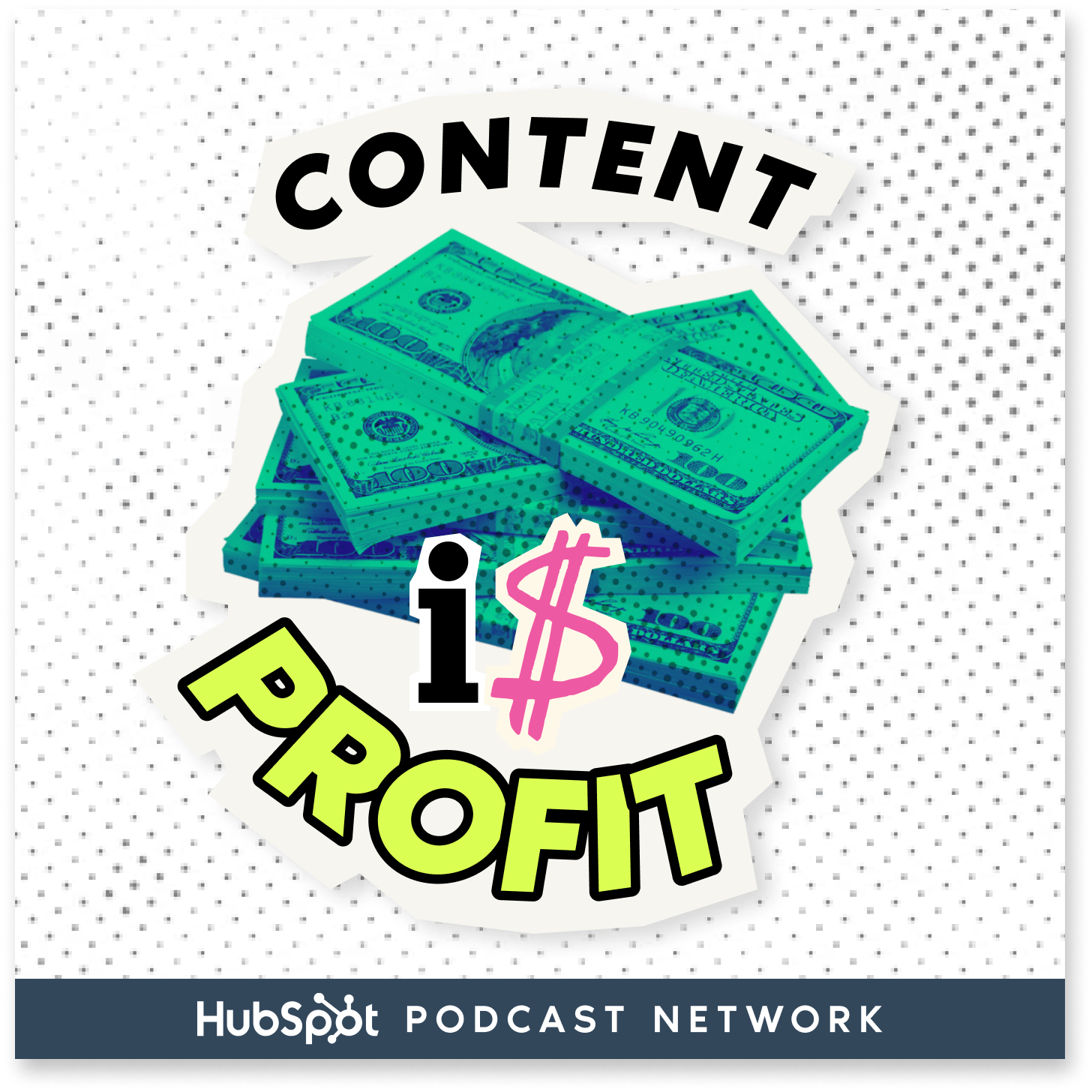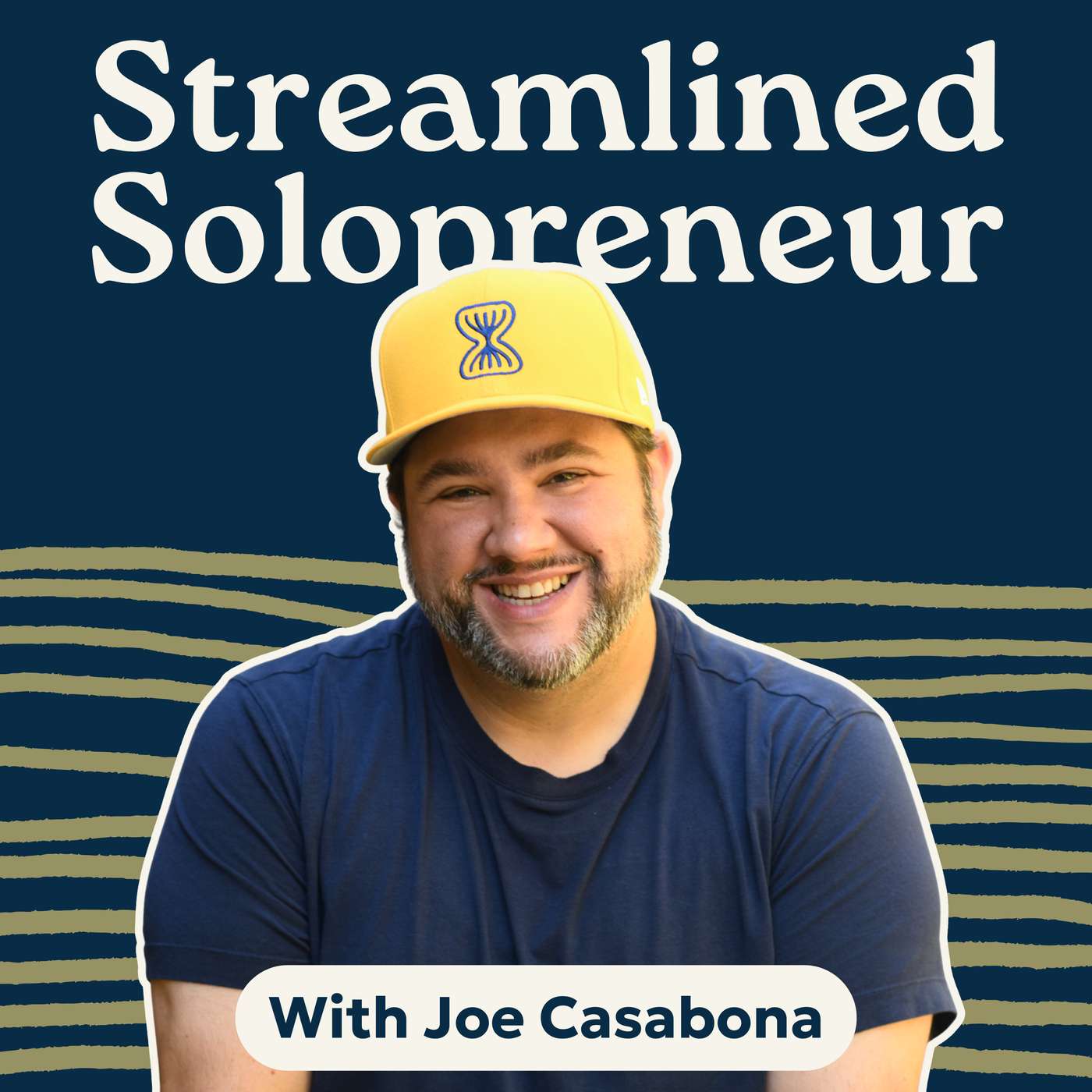
Podcasting Made Simple
Podcasting Made Simple is the premier podcast about podcasting! We’re here to help podcast guests and podcast hosts reach more listeners and grow their income so they can change more lives! Join Alex Sanfilippo and other podcasting industry experts as they share how you can level up on either side of the mic! (Show notes and resources: https://PodMatch.com/episodes)
Podcasting Made Simple
How to Get Podcast Listeners to Take Action | Jennifer Arvin Furlong
Do you ever feel like no matter what you do, you cannot get podcast listeners to take action after listening to your podcast? You're not alone! However, by using Monroe's Motivated Sequence, we discover a framework for effectively persuading listeners to a call to action. In this episode, Jennifer Arvin Furlong shares 5 steps for creating a podcast call to action that listeners follow. Get ready to start converting listeners into action-takers!
MORE ON THIS EPISODE: HTTPS://PODMATCH.COM/EP/293
Chapters
00:00 Introduction to Monroe's Motivated Sequence
03:18 Chapter 1: Grabbing the Audience's Attention
05:03 Chapter 2: Establishing a Need for Change
08:18 Chapter 3: Presenting the Solution
09:17 Chapter 4: Visualizing the Future
11:31 Chapter 5: The Call to Action
Takeaways
- Monroe's Motivated Sequence is a valuable tool for creating an effective call to action in a podcast.
- To grab the audience's attention, use tools like rhetorical questions, startling statistics, or personal stories.
- Establish a need for change by explaining the problem and why the audience should be concerned about it.
- Present the solution in a practical and easy-to-follow way.
- Help the audience visualize the positive future if they take action and the negative consequences if they do nothing.
- End with a clear and specific call to action.
MORE ON THIS EPISODE: HTTPS://PODMATCH.COM/EP/293
🎁 Want 9 quick ways to level up as a podcast host, guest, or agency? Visit https://PodMatch.com/Free! (No signup required)
You're listening to Podcasting Made Simple. Hey there, I'm Jen Furlong, host of the Communication 24 -7 podcast, where we communicate about how we communicate. I want to spend some time sharing with you a very popular communication tool called Monroe's Motivated Sequence. And the reason I want to share this tool with you is because it is a fantastic tool to use if you want to create a call to action for your podcast that is going to be effective. One of the most amazing things about being a podcaster is that we have a stage that we can use for good. If we want to be a positive force within our world, if we want to be able to enact change in some positive way, then we want to be able to learn more of the tools that are at our disposal so that we can do a call to action in order to influence others to join our cause and to do that call to action that we want them to do. So Monroe's Motivated Sequence is a five step process and it's a very valuable process to learn and to know because it is something that is used across the globe by marketing teams and communications teams everywhere, whether they're for -profit, nonprofit, whatever. Monroe's Motivated Sequence, if you want to put together an infomercial, a persuasive speech, or an episode that has a clear call to action, this is the process that you want to be familiar with. Now, before we get started with the five steps, the first thing I want you to do is to really think about your audience. Who is your target audience? Because you need to be very specific in order to create an effective call to action. You want to be very specific in your purpose. Remember, fuzzy targets do not get hits. So the first thing I want you to do, remember before we get to the five steps, is I want you to write down this sentence. The purpose of this episode is to convince the audience to, and then fill in the blank. I'll say it one more time. The purpose of this episode is to convince the audience to, and then fill in the blank. It's important to be very specific because when you're asking your audience to do something, they need to have clear instructions. Don't leave it open to interpretation. I want my audience to donate money. I want my audience to donate time. I want my audience to volunteer. I want my audience to email. I want my audience to call. Whatever that is, that's your call to action. So be very specific. The more specific you are, the more likely you're going to be to be successful in this call to action. All right. So that is the prequel to the five steps that I'm going to teach you today. So with Monroe's Motivated Sequence, let's jump right in. This is going to be step number one. you want to grab your audience's attention. Now remember, you have a very specific target audience in mind. There are very many tools that you can use to grab the audience's attention. So think about which tool would be most effective for this particular audience. For example, you could ask a rhetorical question to get them thinking about whatever it is the topic is that you want to talk about. You could state a startling statistic, something that maybe you didn't know about and you know your audience isn't going to know about, and it got you going, hmm, that's pretty interesting. I had no idea. Or you could share a personal story. Maybe you have some personal connection. If you want to convince the audience to donate money to a certain nonprofit, and the reason you know about this nonprofit is because you have a very personal experience, Well, that's a great opportunity to share your story at the very beginning to get them hooked into that topic. Or maybe you read something in the news just that morning. It could be an interesting story that you read in the newspaper. The point is you want to hook the audience in before you even make an ask. You have to get them to know. that this is something that they should be interested in. And the way that we do that is by grabbing the audience's attention by using a specific tool, either a rhetorical question or a personal story or maybe a story that you read in a newspaper or a startling statistic, an interesting fact. Any of those things are great ways to grab your audience's attention. Whichever way you decide to go, whatever tool you decide to use, make sure that you are appealing to their senses. When you're telling the story, appeal to their sense of sight, their sense of sound, their sense of smell, their sense of touch. You want to tug at the old heartstrings. That's how you hook them in to the story that you're sharing with them. You want to be able to create this sense of urgency. As you are grabbing the audience's attention, you want to share the information in such a way that is creating that sense of urgency and they're going to feel, man, I better keep listening because I want to know what's coming up next. So that's step number one. Step number two, now you need to establish a need for change. Sometimes we'll call this just stating what the problem is. But that's not enough. You can't just state the problem. And the reason you have to establish that there is a need for change is not everybody is going to even know that there is a need for change. None of us come from the same walk of life. None of us have the exact same experiences, background, all of those things. No two people will ever come from the same frame of reference. So to no fault of their own, those within your audience, they may not even necessarily understand that there is a problem that needs to be changed. So you have to convince your audience that there is a problem and explain why should your audience even be concerned about this. So in step number two, when you're establishing the need for change, use facts, use statistics, use examples. You want to be able to show and share with your audience exactly what the issue is and why this issue is so important. Who is it impacting? And why does it impact your audience? That's how you get them invested into the problem. The more you explain what the problem is, the more statistics you use, the more examples you use. the more that you provide within the story as you are framing this problem, you're going to get them emotionally invested even further. This is going to sound terrible, but as you're explaining what the problem is, you want them to start feeling pretty bad about the problem so that you can encourage them to become a part of the solution. So share that information, establish that there is in fact a need for change. Then you move on to step number three. Once you've established a need for change, now you have to explain, how are we going to satisfy this need? This is the solution to the problem. So introduce what you think the solution is. How can we become a part of that solution? And how is that practical? That is key for your listening audience. How is it practical? make it easy for them to be a part of this solution. So again, what is it that you want them to be able to become a part of as far as that solution is? And how easy is it to do? It only takes five minutes to sign this petition. And if you sign this petition, you are going to join thousands of others who also agree that this is the best solution. to this problem. You want to be able to describe how they can go about being a part of this solution. And the easier you make it for them, the more likely it is that they are going to follow your instructions. Step number four, visualize. Now, this is where you help them visualize the future. If you've ever watched any infomercial, this is going to sound familiar to you. The before and after pictures, before and after scenario, this is where they get you in marketing every single time. This is how they convince you that you need to buy that bacon bowl, even though you know that you don't really need to buy that bacon bowl. But by the end, for some reason, you just feel like you need to have it. That's because they've been successful. Step number four, visualizing the future. So if you... agree with me that there is in fact this problem. There is a need for change and you can see how horrible this problem is. And now that you see how easy it is to become a part of the solution, it's not going to take any more than one minute out of your day to participate in the solution. Think about all of the wonderful things. Visualize all of the wonderful things that can happen. If we all were to do this one thing that I'm asking, how we can all become a part of the solution, how wonderful the world would be. Given the statistics, given the examples, given the facts, in addition to that, how wonderful you're envisioning this beautiful future. If you partake in the solution that I'm asking you to partake in, equally as important is think about how awful Things will continue to be if we do nothing about it. That's equally as important in step number four. So visualizing the positive future, use examples, use facts, use statistics if you can, and also visualize what is going to happen or what could potentially get worse if we do nothing. Visualize that kind of future. That brings us to step number five, the final step. That is the call to action. So that's why I said earlier, be very specific in what it is that you want the audience to do. So step number five, you're going to summarize everything and then make it very clear exactly what it is you want the audience to do. So by now, I hope that you see this is such a prevalent. problem at the very beginning I shared with you the statistics of everyone that this is impacting. I have shared with you why you should care about this. It's very clear that this is a problem that is not going away and it is impacting so many of us. But the good news is there is something that we can do about it. And that solution is easy, it's practical, and it's something that we can all be a part of. Remember how wonderful of a future it can be if we all do this. So I'm asking you today, the end of this episode, I want you before you move on to the next thing, before you do anything else, as soon as you stop listening to this episode, I want you to pick up the phone and I want you to call this number. I want you to email this address. I want you to sign this petition. I want you to visit this website. I want you to donate. your money. I want you to volunteer your time. Be very specific in that call to action. And that is the final thing that you will ask of your audience. So those are the five steps. Remember before the five steps, I said, write out that sentence, that what is exactly that you want your audience to do by the end of your episode. That's going to be the ask. That's going to be the call to action. And then you're able to craft your five step called action using Monroe's motivated sequent. If you follow those five steps, you are more than likely going to be successful in getting your audience to do what it is that you want them to do. Thank you. For more episodes, please visit podmatch.com forward slash episodes. Thank you so much for listening.
Podcasts we love
Check out these other fine podcasts recommended by us, not an algorithm.

Content Is Profit
BIZBROS
Win The Content Game
Deirdre Tshien - CEO & co-founder of Capsho, AI-powered Content Marketer (the fastest way to repurpose and market your expert content)
Fastlane Founders and Legacy with Jason Barnard: Personal Branding, AI Strategies, and SEO Insights
Jason Barnard Entrepreneur and CEO of Kalicube
Hacks and Hobbies with Junaid Ahmed
Junaid Ahmed
I Have A Podcast by Vinnie Potestivo
Vinnie Potestivo
The Small Business Storytellers with Seth Silvers
Seth Silvers
Streamlined Solopreneur: Tips to Help Small Business Owners Grow Without Burnout
Joe Casabona, Business Systems Coach
Insider Secrets to a Top 100 Podcast with Courtney Elmer | Podcasting Strategy for Business Growth
Courtney Elmer | PodLaunchHQ.comDo The Thing
Stacey Lauren
Tech Bytes - with Dan Hafner
Dan Hafner

